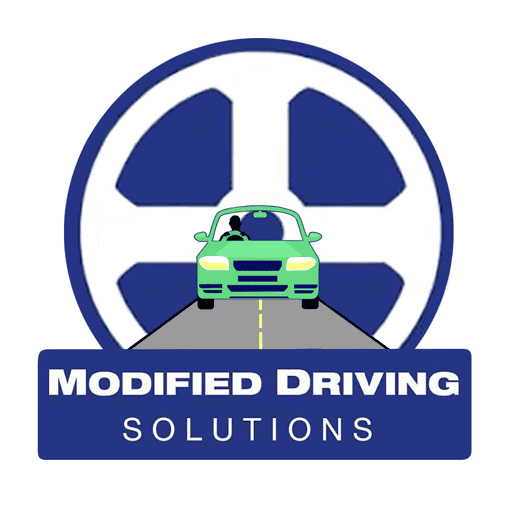Occupational Therapy (OT) driving assessments commonly play a vital role in supporting people with intellectual disabilities to learn to drive. This blog explores what these assessments involve, why they matter, and how they empower individuals to drive confidently and responsibly.
Understanding Intellectual Disabilities and Their Impact on Driving
An intellectual disability is a condition usually diagnosed in the childhood years. It is characterized by less than standard intellectual functioning, often defined by an IQ of below 70. While individuals with this condition may face challenges in areas such as divided attention, memory, problem-solving, and adaptive functioning, many can learn to drive successfully. For people with intellectual disabilities, driving affords them access to greater opportunities in education, travel, employment and social connections. However, as driving is a complex activity, specialised supports and assessments may be crucial to ensure that someone can obtain their driver’s licence.
What Is an OT Driving Assessment?
An Occupational Therapy Driving Assessment is a specialized evaluation conducted by driver-trained occupational therapists. Along with medical assessments, it helps determines whether a person with a disability can drive safely and direct the supports they may need. For aspiring drivers with intellectual disabilities, they must first successfully pass the Transport NSW knowledge test and obtain their learner licence.
Key components include:
•Off-road assessment: Evaluates cognitive, visual, and physical skills needed for driving.
• On-road assessment: A practical driving test with the OT and driving instructor to observe real-world driving ability.
• Recommendations and report: These may include further training (including NDIS-funded driving lessons), restrictions to be placed on their licence, or requiring further assessment.
For NDIS participants wishing to have driving lessons incorporated into their plan, the assessment is required by the NDIS. The report is also sent to Transport NSW, who may request further information about the disability or medical issue. The person may be asked to visit their GP to complete the RMS medical fitness to drive form.

Challenges Faced by Drivers with Intellectual Disabilities
Driving with an intellectual disability can present unique difficulties, such as:
• Processing speed: Slower reaction times when responding to road signs, traffic signals or hazards.
• Attention and concentration: Difficulty maintaining focus during long or complex driving tasks.
• Judgment and decision-making: Challenges in interpreting road rules or anticipating other drivers’ actions.
• Memory and learning: Needing more repetition to retain and safely apply driving skills and rules.
Despite these challenges, with structured training many individuals can become safe and competent drivers.
How OT Driving Assessments Provide Support
The OT driving assessment often recommend supports, including:
• Tailored driving lessons: A bespoke driving lesson program focusing on specific goals, often with graded exposure to various traffic environments. It is also recommended that the person works with a rehabilitation driving instructor with experience in medical conditions/disability.
• NDIS-funded driving lessons: For NDIS participants, the OT can organise a quote for what the specialised lessons will cost, which the NDIS can approve for their plan.
• Further medical assessment: If the OT believes that there are other medical issues needing further investigation, they may suggest that the person sees a doctor, optometrist or medical specialist.
• Monitoring and OT driving reassessments: In collaboration with the driving instructor, the OT often monitors the person’s driving progress to observe if they are meeting the goals set. It is also common for learner drivers with intellectual disability to need an OT driving reassessment after completing their driving rehabilitation program.
The Assessment Process Step by Step
1. Referral: A doctor’s referral outlining the person’s medical condition is helpful but not always necessary.
2. Off-road testing: Skills such as vision, reaction time, and cognitive processing are assessed. The therapist also gathers background information about medical history, driving history and goals.
3. On-road evaluation: The individual drives a dual control vehicle with the OT and a licenced driving instructor. A family member/carer is also welcome to attend.
4. Outcome and recommendations: The therapist provides a report outlining the recommended supports, including any further assessments required.
It is worth noting that for learner drivers with nil/little driving experience, an OT driving assessment often cannot determine if someone with an intellectual disability will successfully get their licence. Once the person has more driving experience, the OT may then be able to put forth an opinion about the likelihood that the person will progress to Provisional licence.
Ensuring Safe Independence Through OT Driving Assessments
Licensing authorities must balance the right to independence with public safety. OT driving assessments provide an evidence-based way to make these decisions fairly. They ensure that individuals with intellectual disabilities are not excluded from driving simply because of their diagnosis, but are assessed on their actual abilities and potential.
An OT driving assessment is the most effective and secure way an intellectual disability and potential impact is on driving is observed. It ensures that the person is well supported with specialised services, and that proper notification is made to Transport NSW. After the assessment, the person and their family can feel confident that their driving aspirations are evenly weighed against any safety concerns.

